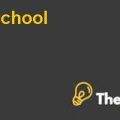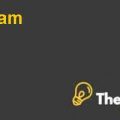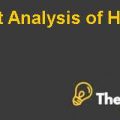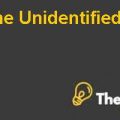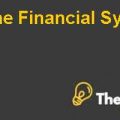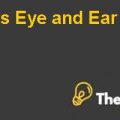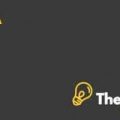
(a)Whatare therevenue maximizing,monopolyfor the basic phone service on the LG device and the revenue maximizing, monopoly price for the optional content bundle? Show your work.
Our analysis in Exhibit 4 shows that in a bundle pricing approach, the basic motive is to offer the main product at a comparatively low price by sustaining higher profit margins from component products. The company is considering offering LG device along with content bundles of NBC, CBS and ESPN. In order to determine the revenue maximizing, monopoly price for the basic phone and optional content bundle, the organization shall initially consider the cost associated with the product and the customer’s willingness to pay for the product. In segment 2, the organization is considering to offer relatively low price at 5.42, this will attract the customers and will be willing to pay for component services but on the other hand the market share of segment 2 is relatively low therefore; the organization shall consider to adopt the bundle pricing strategy in segment 3 by reducing the price of basic phone and provides an opportunity for them to offer component services at higher prices, hence maximizing profits.
3. (b) how do the revenue from this scheme compare with the scheme in Q2? Does your answer make intuitive sense? Why or why not
The revenue from both the schemes are with different totals and will show different results because the scheme 1 is considering to adopt three channels whereas scheme 2 is considering to adopt a total of five channels in the device, which determines that it is not alike in like comparison and the channels revenue strongly depends on the popularity of the channels i.e.: STARZ is a high revenue generating channel that makes the comparison meaningless.
Question 2: Childcare Services Pricing in a Ski Resort
1. Given these costs, what price does the business actually charge?
Our analysis in Exhibit 8 shows that in case the company wants to enjoy a 60% gross margin then the company shall estimate a selling price of $42.5 for all three seasons, whereas during winter season where the organization is susceptible to charge an extra rental cost of $28 per child then the company shall estimate the selling price of $212.5 per child for winter season.
2. Do you believe this price will maximize profits? If not, explain why you disagree. You do not need to recommend an alternative price per se. But, you might want to use break-even analysis to support your explanation.
Our analysis in Exhibit 9 shows that in case the company is currently charging a margin of 60% on its sales, which is a very high margin and this will benefit the organization to achieve high profit margins but on the other hand, there may be a possibility that competitors may charge low price by enabling low margin. If this is the case, then it may be worse in the overall situation for company and competitors may benefit from situation by charging low price then in such situation the organization shall consider to revise its prices so as to avoid any unfortunate situation in the long run.
In three seasons, the company has a fixed cost of $7 per child, which indicates that the contribution margin with this respect will result in 64.91%, so in order to achieve the breakeven sales; the company will be required to generate a sale of $10.78. Further, for the winter season, the contribution margin of the company represents 76.47% and the fixed cost of the company equals to $35, so in this respect, the organization is required to generate breakeven sales of $45.77.
Question 3: Pricing of Printers and Ink Cartridges
1. Derive the demand curve for the base product (i.e. a printer bundled with a single ink cartridge).
2. What is the profit-maximizing price of the printer if your firm decides not to sell replacement ink cartridges?
3. What is the profit-maximizing price of the printer and of each ink cartridge if your firm decides to sell both products as tied goods?
4. Does your pricing strategy in (3) achieve a form of price discrimination? Explain.
In a price elasticity of demand, a change in price will result in a change in quantity demanded, so the elasticity is known to be infinite. Further, where there is a change in price, the quantity will increase whereas in perfect inelasticity of demand, a change in price will result in no change in quantity demanded, so the elasticity will be zero. In a perfect inelastic situation, whether or not there is a change in price, the demand will not be affected and it will remain zero............................
This is just a sample partial case solution. Please place the order on the website to order your own originally done case solution.

